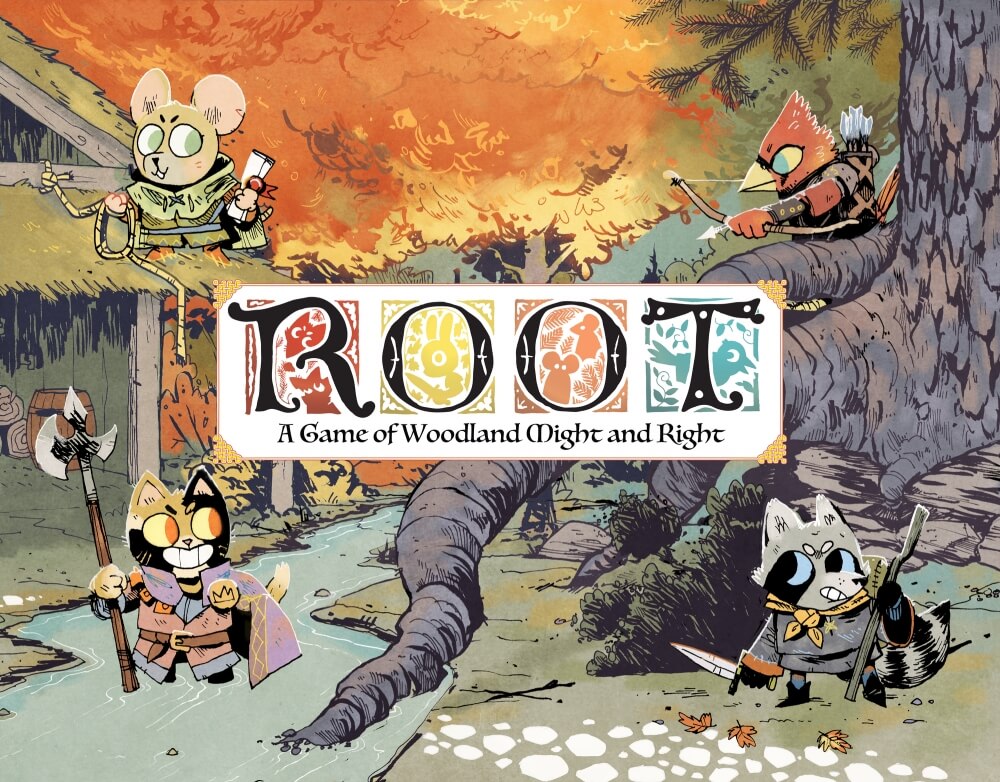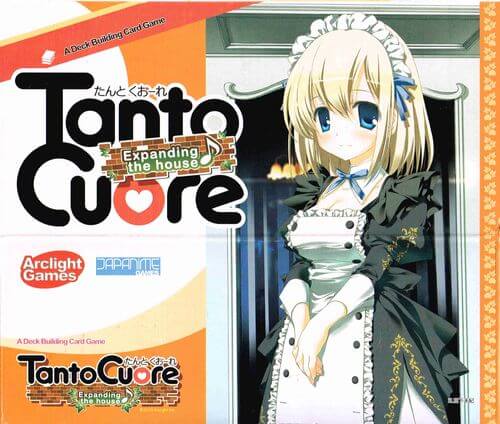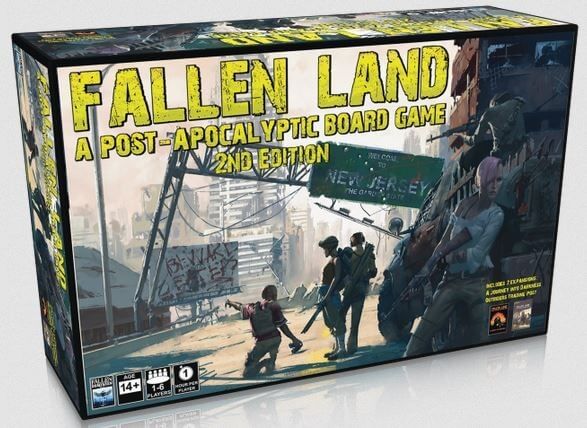
Root
Root is a strategic game of conquest and ingenuity for 2 to 4 players, set in a vibrant forest full of life. Players take on unique and asymmetrical roles, each representing different factions fighting for control of the territory. Cat's Marquee, an authoritarian presence, seeks to dominate the forest, exploiting its resources and imposing its rule. In response, the Alliance, made up of various native creatures, plans to resist and reverse this oppression, using guerrilla tactics and strategic alliances. In addition, the vagabonds, with their special abilities, offer support to those who promise more attractive rewards, acting as free agents in the midst of the conflict. With an innovative design, Root combines elements of strategy, negotiation and combat, where every decision can change the fate of the great forest. The multi-functional cards enrich the gameplay, allowing for new strategies and twists at every turn. Complexity: 3.76 / 5 (BGG 04/05/2023) ************************************************************************** Nominated for the Ludopedia Game Expert of the Year Award 2019 Nominated for the Ludopedia Game Expert of the Year Award 2019 - Popular Vote **************************************************************************Artists: Kyle Ferrin;
Designers: Cole Wehrle;
Date: 2018
Note: 8.8
Mechanics: Racing, Action queue, End by Sudden Death, Hand Management, Influence / Majority in the Area, Players with Different Skills, Area Movement, Point-to-point movement, Variable preparation, Action Recovery, Data Scrolling
Table of Contents
- How to Play
- Tips for playing
- Game mechanics
- Game components
- Additional Information
OBJECTIVE OF THE GAME
Tips for playing
Here are some tips for doing better in the game Root:
- Master your faction by understanding its abilities and limitations.
- Keep an eye on the cards and their effects, they can change the course of the game.
- Use the terrain to your advantage; some factions benefit more from certain types of terrain.
- Observe your opponents' moves to anticipate their movements and strategies.
- Focus on your victory objectives, but be ready to adapt as the game progresses.
- Cooperation and negotiation can be crucial, especially in multiplayer games.
- Balance between expanding your territory and consolidating your positions.
Video about the game
GAME mechanics
- Influence/Majority in the Area: In Root, each faction seeks to control clearings on the board by establishing buildings and presence tokens. Domination of a clearing is determined by the number of pieces present; having more pieces than the opposing factions guarantees control, allowing exclusive actions and obtaining points per turn.
- Hand Management: Each player manages a hand of cards that represent actions, reinforcements or strategic effects. Knowing which cards to keep, discard, or play at a given time is crucial for long-term strategy and optimizing available resources and actions.
- Area Movement: Players move their pieces from one clearing to another. Movement is governed by connected paths and is limited by clearing dominance rules and restrictions imposed by certain faction cards or special abilities.
- Players with Different Skills: Each faction has unique abilities and victory conditions. For example, the Bird Dynasty has a sequential schedule of actions that must be rigidly obeyed, while the Rebel Alliance grows in power through subversion and uprisings.
- Point-to-point movement: The pieces move between connected points on the map, which are the clearings. The movement of a piece from one clearing to another is fundamental to the control of areas and the effectiveness of offensive or defensive actions.
- Data Scrolling: Dice rolling is used to resolve combats. Attacker and defender each roll a die, with results ranging from zero to three, determining the number of hits in battles, adjusted by the number of warriors available.
- Action queue: The queue of actions is evident in the Birds mechanic, where the player must place cards in their "Decree" and execute them in a specific order every time their turn starts, causing strategic challenges of continuous fulfillment.
- Action Recovery: During the game, players can have certain turns that allow them to recover actions, such as replenishing cards or reorganizing units, guaranteeing the possibility of re-establishing strength or reorganizing strategies.
- Racing: The progression of the game can be seen as a race to achieve the goal of victory points. Players compete to achieve a certain number of points by performing actions that maximize efficiency and point gain each turn.
- End by Sudden Death: Under certain conditions, such as the complete unleashing of the Birds' "Decree" or the total success of a revolution, the game can end abruptly, resulting in an instant victory for one faction due to the fulfillment of specific objectives.
- Variable preparation: At the start of the game, the factions' preparation varies, with different arrangements of units, starting cards, and placement on the board, ensuring that each game of Root begins with unique challenges and opportunities.
Game components
See all the items in the game below Root:
- 93 tokens [4 Victory Point Markers, 1 Marques Fortress, 8 Marques Woods, 18 Marques Constructions (6x sawmills, 6x workshops, 6x recruiting), 7 Eagle's Perches, 10 Alliance Sympathies, 3 Alliance Constructions (Fox, Rat, Rabbit), 3 Rascal Relationship Markers]
- 2 data
- 4 faction trays
- 56 Meeples (25 Marques, 20 Eagles, 10 Forest Alliance, 1 Rascal)
- 98 Cards: 54 Shared Deck (14x Birds, 14x Foxes, 13x Mice, 13x Rabbits), 4 Eagle Leaders, 2 Eagle Viziers, 3 Rascal Characters, 15 Quests (5x Foxes, 5x Mice, 5x Rabbits), 16 Overview (4 from each faction), 4 Examples/setup
- 3x Book/rulesheet
- 23 items [7 Initials (S) (torch, bag, boot, crossbow, hammer, sword, kettle), 4 Ruins (R) (bag, boot, hammer, sword), 12 Craftable items (2x bag, 2x boot, 1x crossbow, 1x hammer, 2x sword, 2x kettle, 2x coins), 4 Ruins, 12 Winter markers (4x Foxes, 4x Mice, 4x Rabbits)]
- 1 Double-sided tray
Additional Information
- Ludopedia link: https://ludopedia.com.br/jogo/root
- Link Tabletopia:
- Amazon Brazil link: Comprar Root
- Amazon USA link: Comprar Root


